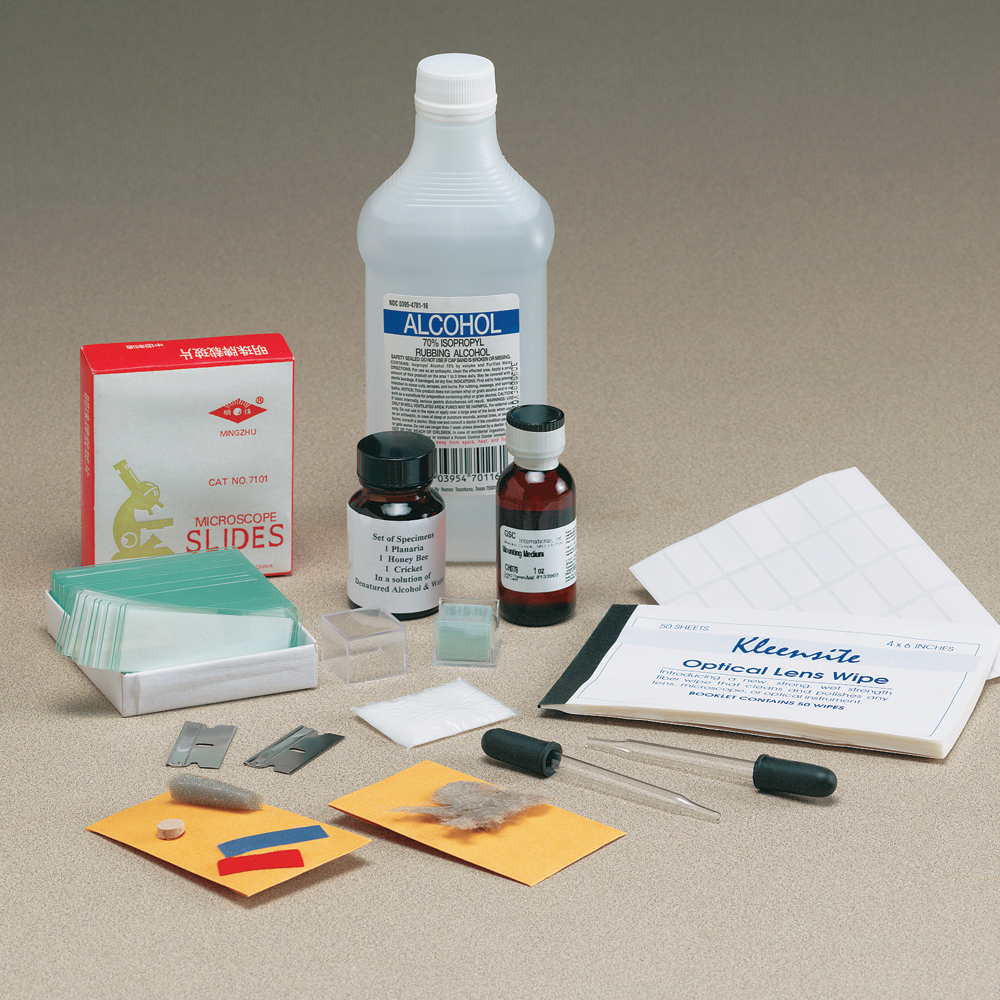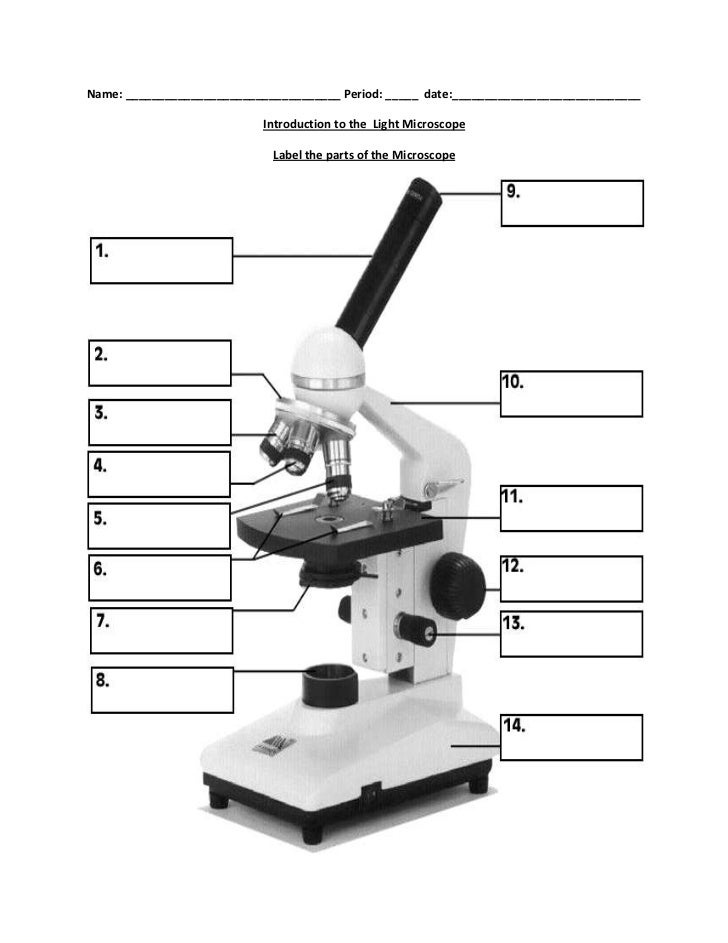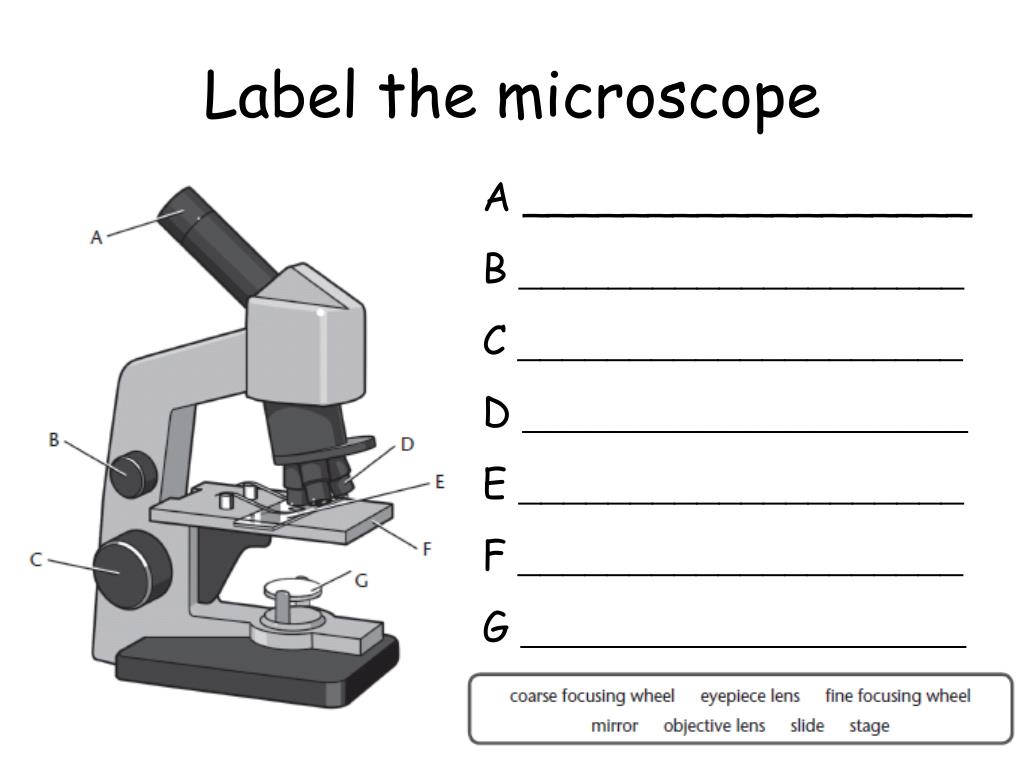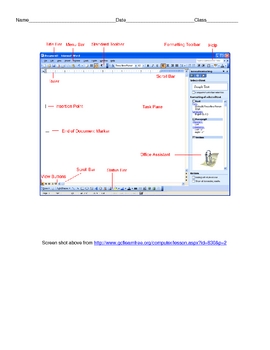41 microscope labels and definitions
Microscope Glossary A microscope is typically composed of a head or body and a base. The base is the support mechanism. Binocular Microscope A microscope with a head that has two eyepiece lens. Nowadays, binocular is typically used to refer to compound or high power microscopes where the two eyepieces view through a single objective lens. microscope labels Flashcards | Quizlet Start studying microscope labels. Learn vocabulary, terms, and more with flashcards, games, and other study tools.
Compound Microscope Parts, Functions, and Labeled Diagram Compound Microscope Definitions for Labels. Eyepiece (ocular lens) with or without Pointer: The part that is looked through at the top of the compound microscope. Eyepieces typically have a magnification between 5x & 30x. Monocular or Binocular Head: Structural support that holds & connects the eyepieces to the objective lenses.

Microscope labels and definitions
Compound Microscope- Definition, Labeled Diagram, Principle, Parts, Uses Therefore, a microscope can be understood as an instrument to observe tiny elements. The optical microscope often referred to as the light microscope, is a type of microscope that uses visible light and a system of lenses to magnify images of small subjects. There are two basic types of optical microscopes: Simple microscopes Compound microscopes Parts of the Microscope Label and Definition Diagram - Quizlet Parts of the Microscope Label and Definition STUDY Learn Flashcards Write Spell Test PLAY Match Gravity Created by jlabel Terms in this set (14) Body Tube Keeps correct distance between eyepiece and lens Revolving Nosepiece Holds high and low power objectives, can be rotated to adjust magnification Low Power Objective Compound Microscope Parts - Labeled Diagram and their Functions A microscope is an instrument used to see objects that are too small to be seen by the naked eye. We have an article covering the history, types, and evolution of all kinds of microscopes. If you are interested in this topic, please click the link above. [In this figure] The name "microscope" came from two words - "micro" and "scope".
Microscope labels and definitions. Parts of a microscope with functions and labeled diagram Microscope Definition Microscopes are instruments that are used in science laboratories to visualize very minute objects such as cells, and microorganisms, giving a contrasting image that is magnified. Microscopes are made up of lenses for magnification, each with its own magnification powers. microscope | Types, Parts, History, Diagram, & Facts | Britannica It is usually expressed in the form 10× (for an image magnified 10-fold), sometimes wrongly spoken as “ten eks”—as though the × were an algebraic symbol—rather ... Microscope: Types of Microscope, Parts, Uses, Diagram - EMBIBE There microscope anatomy includes three structural parts, i.e. head, base, and arm. Head - This is also known as the body; it carries the optical parts in the upper part of the microscope.. Base - It acts as microscopes support.It also carries microscopic illuminators. Arms - The microscope arm connects the base and the head and the eyepiece tube to the microscope base. Microscopy- History, Classification, Terms, Diagram Microscopy can simply be understood as the 'use of microscope'. Microscopy can be defined as the scientific discipline of using microscopes for getting a magnified view of objects that can't be viewed by naked eyes. It is a very important tool in biology and nanotechnology.
5 Types of Microscopes with Definitions, Principle, Uses, Labeled Diagrams 5 Types of Microscopes with Definitions, Principle, Uses, Labeled Diagrams March 1, 2022 by Sagar Aryal 5 Types of Microscopes There are mainly 5 common types of microscopes as follows: Bright-Field or Light Microscope Dark Field Microscope Phase Contrast Microscope Fluorescence Microscope Electron Microscope Simple Microscope - Parts, Functions, Diagram and Labelling Parts of the optical parts are as follows: Mirror - A simple microscope has a plano-convex mirror and its primary function is to focus the surrounding light on the object being examined. Lens - The biconvex lens is placed above the stage and its function is to magnify the size of the object being examined. Microscope Parts and Functions First, the purpose of a microscope is to magnify a small object or to magnify the fine details of a larger object in order to examine minute specimens that cannot be seen by the naked eye. Here are the important compound microscope parts... Eyepiece: The lens the viewer looks through to see the specimen. Microscope Parts & Specifications The compound microscope uses lenses and light to enlarge the image and is also called an optical or light microscope (versus an electron microscope). The ...
Microscope Glossary of Terms: Microscope A-Z - Microscope and ... Body - The upper part of the microscope including the stage and is often referred to alongside the eyepiece. Body Tube Length - This refers to the distance between the objective and the very top of the body tube. This can be important as objective lenses are compatible with certain body tube lengths and a mismatch can cause spherical aberrations. Microscope Glossary of Terms - OpticsPlanet 9. Base. The part of the microscope that comes in contact with the table or other surface used to support it. 10. Bertrand Lens. This is a small lens used in the tube of a polarized light microscope and is used to study interference patterns for the sake of identification and analysis. 11. Microscope Terms | Microscope World Resources Articulated Arm: A type of microscope stand that holds a microscope body. The stand clamps to a table or has a large base and has a variety of motion in three dimensions. The microscope body is held onto the articulated arm stand with a focusing holder. Articulated arm microscope stands are often used in industrial and manufacturing settings. Microscope Parts & Functions - AmScope Microscope Terms. This is a glossary of commonly used microscopy terms. Abbe Condenser: A lens that is specially designed to mount under the stage and which typically moves in a vertical direction. An adjustable iris controls the diameter of the beam of light entering the lens system. Both by changing the size of this iris and by moving the ...
PDF Definitions of the Parts of the Microscope - UAlberta microscope moves the stage up and down to bring the specimen into focus. The gearing mechanism of the adjustment produces a large vertical movement of the stage with only a partial revolution of the knob. Because of this, the coarse adjustment should only be used with low power (4X and 10X objectives) and never with the high power lenses (40X and
Light Microscope- Definition, Principle, Types, Parts, Labeled Diagram ... A light microscope is a biology laboratory instrument or tool, that uses visible light to detect and magnify very small objects and enlarge them. They use lenses to focus light on the specimen, magnifying it thus producing an image. The specimen is normally placed close to the microscopic lens.
Microscope Types (with labeled diagrams) and Functions " Micro " means very small (typically not visible to the naked eye) and " scope " means to assess or investigate carefully. So, the microscope is an instrument that aids users to carefully investigate and assess microscopic organisms and objects that are not visible to the naked eye.
Microscope Glossary of Terms | Celestron Microscope - an optical instrument used for viewing objects, typically under levels of magnification several hundred times the objects' actual size. There are three basic parts: head, body, arm. Compound microscope - a microscope that combines the power of lenses and light to enlarge the subject being viewed.
Microscope, Microscope Parts, Labeled Diagram, and Functions 19 Jan 2022 — A microscope is a laboratory instrument used to examine objects that are too small to be seen by the naked eye. It is derived from Ancient ...

Intermediate Slide Making Kit Prepare Chemistry Microscope Slides for Specimens 795721138810 | eBay
Microscope Magnification: Explained - Microscope Clarity To calculate the magnification on a microscope multiply the magnification power of the eyepiece you are using by the objective currently in position. Magnification = Eyepiece Magnification X Objective Magnification. Microscopes magnify or enlarge the image under inspection and enables the human eye to see things we would never be able to see.
A Study of the Microscope and its Functions With a Labeled Diagram The microscope is an important instrument in the world of biological science. Diagrams have always been of great help in understanding both the structural and functional aspects of entities. These labeled microscope diagrams and the functions of its various parts, attempt to simplify the microscope for you.

Medulla Spinalis(Hematoxylin-Eosin) | Histology - Spinal Cord and Ganglion | Pinterest | Nervous ...
Label the microscope — Science Learning Hub In this interactive, you can label the different parts of a microscope. Use this with the Microscope parts activity to help students identify and label the main parts of a microscope and then describe their functions. Drag and drop the text labels onto the microscope diagram.
Labeling the Parts of the Microscope Labeling the Parts of the Microscope This activity has been designed for use in homes and schools. Each microscope layout (both blank and the version with answers) are available as PDF downloads. You can view a more in-depth review of each part of the microscope here. Download the Label the Parts of the Microscope PDF printable version here.
Label Microscope Diagram - EnchantedLearning.com Using the terms listed below, label the microscope diagram. arm - this attaches the eyepiece and body tube to the base. base - this supports the microscope. body tube - the tube that supports the eyepiece. coarse focus adjustment - a knob that makes large adjustments to the focus. diaphragm - an adjustable opening under the stage, allowing ...
Microscope: Definition, Types, Uses, Parts & Examples | Toppr 4. Fluorescence Microscope. These scopes use ultraviolet light to illuminate specimens that fluoresce. Besides, mostly, a fluorescent antibody or dye is added on the viewed specimen. 5. Contrast/Phase Microscope. This scope uses a special condenser that allows the examination of structures inside the cells. Also, they use a compound light.
22 Parts Of a Microscope With Their Function And Labeled Diagram The field diaphragm control is located around the lens located in the base. Hinge Screw -This screw fixes the arm to the base and allow for the tilting of the arm. Stage Clips - They hold the slide firmly onto the stage. On/OFF Switch - This switch on the base of the microscope turns the illuminator off and on.
Microscope Parts - definitions Flashcards | Quizlet Moves Body Tube up and down for focusing Arm supports body tube Fine Adjustment Sharpens image by moving body tube slightly Nosepiece Holds high and low power objectives, can be rotated to adjust magnification High Power Objective Provides higher magnification, usually about 40x Low Power Objective Provides lower magnification, usually about 10x
Parts of Stereo Microscope (Dissecting microscope) - labeled diagram ... Stereo microscopes (also called Dissecting microscope) are branched out from other light microscopes for the application of viewing "3D" objects. These include substantial specimens, such as insects, feathers, leaves, rocks, sand grains, gems, coins, and stamps, etc. Functionally, a stereo microscope is like a powerful magnifying glass.
Compound Microscope Parts - Labeled Diagram and their Functions A microscope is an instrument used to see objects that are too small to be seen by the naked eye. We have an article covering the history, types, and evolution of all kinds of microscopes. If you are interested in this topic, please click the link above. [In this figure] The name "microscope" came from two words - "micro" and "scope".
Parts of the Microscope Label and Definition Diagram - Quizlet Parts of the Microscope Label and Definition STUDY Learn Flashcards Write Spell Test PLAY Match Gravity Created by jlabel Terms in this set (14) Body Tube Keeps correct distance between eyepiece and lens Revolving Nosepiece Holds high and low power objectives, can be rotated to adjust magnification Low Power Objective










Post a Comment for "41 microscope labels and definitions"